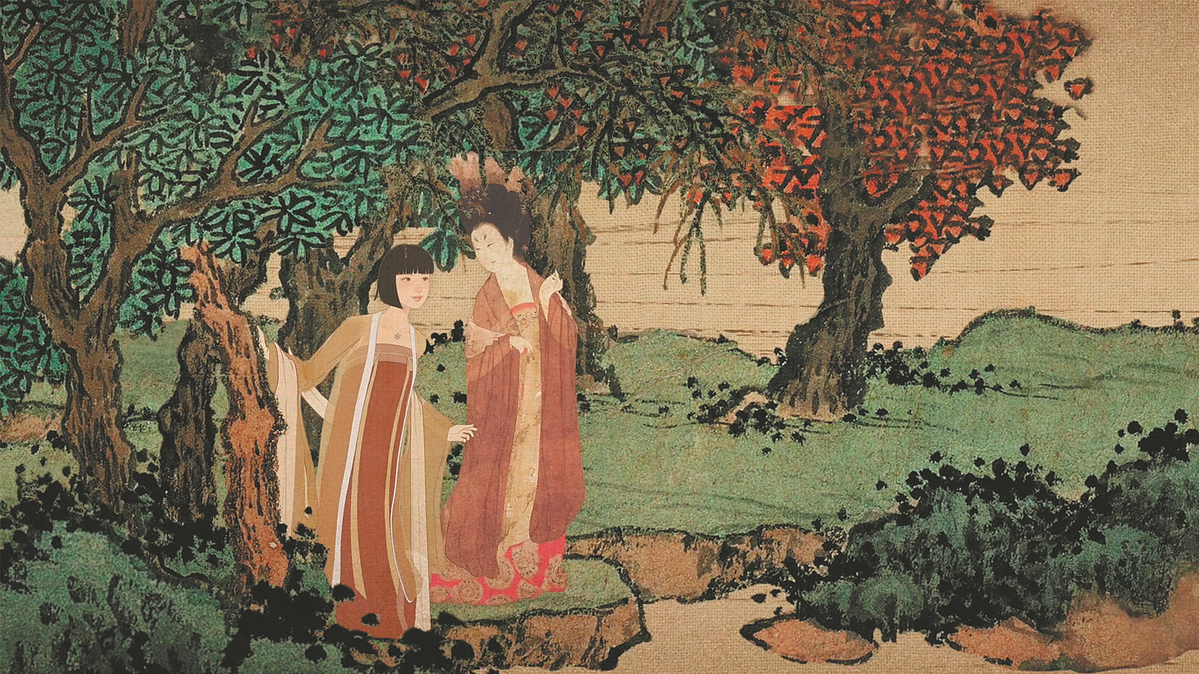

Editor's note: China, a country with a long and splendid cultural history, demonstrates its exceptional achievements via numerous heritage sites, intangible cultural heritage items, tourism attractions and old neighborhoods. Follow China Daily's reporters as they travel across the nation to explore these inspiring legacies.
Hundreds of ancient paintings and large contemporary artworks have undertaken a special train journey across two continents, leaving Zhengzhou in Henan province in March and arriving in Italy in April for their debut at the Venice Art Biennale.
Atlas: Harmony in Diversity, the exhibition at China's National Pavilion, which opened on Thursday, features prints, videos, sculptures, installations and performances.
All the works are from or are inspired by A Comprehensive Collection of Ancient Chinese Paintings, a large book project that has systematically compiled images of paintings, some of which date back 2,000 years.
The exhibition is divided into two sections. One is an archive displaying 100 high-fidelity prints of treasured Chinese paintings in the collections of museums outside China, as well as documents recording how these ancient treasures were created, left China, and eventually entered the collections of museums around the world.
The other section comprises seven contemporary works by established artists. They focus on subjects frequently depicted in ancient Chinese paintings, such as architecture, landscapes, figures, birds and gardens.
Wang Xiaosong, curator of the exhibition, said that the aim is to show the beauty and cultural essence of Chinese ink paintings through archives and contemporary art.
"Because of cultural differences, Western audiences have difficulty in understanding some ancient Chinese paintings. We try to use an art language that is easier for them to understand, to help them appreciate Chinese art," Wang said.
Zhu Jinshi's installation Rice Paper Pagoda uses more than 3,000 pieces of rice paper, as well as steel pipes and cotton threads to create a tall paper pagoda, a symbol of Buddhism depicted in many Chinese paintings, and which are regarded as a symbol of the spiritual world. Next to the rice paper model is a board displaying pictures of pagodas around the world.
"Our show is one big archive. Viewers see clearly how the image of the same object varies in different cultures and situations,"Wang added.
In the video installation Pavilion by Che Jianquan, 10 sets of televisions display a pavilion on Lushan mountain, Jiangxi province, filmed for over two decades by the artist. Hundreds of images of pavilions across the world are also shown together.
Qiu Zhenzhong's Status Series sculptures are placed in the national pavilion's garden and reproduce the brush strokes of calligraphy in the concrete lines of the sculptures. In the curator's words, calligraphy is the origin of Chinese ink paintings.
There's also performance art by Wang Zhenghong, who has made 10,000 bird-shaped accessories and plans to wear them as she walks around the exhibition, interacting with visitors. She also attended the celebration dinner after the opening ceremony on Thursday, where singers performed songs inspired by Chinese poems.
Poems, birds, pavilions and pagodas are common elements in ancient Chinese paintings that can all be easily seen in the images of well-known ancient paintings displayed either in print or video in the archive section.